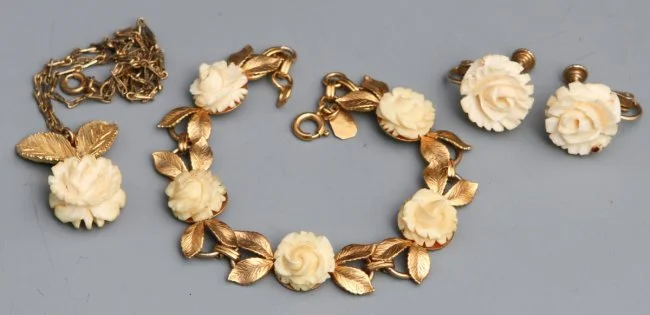Celluloid was created in 1869 by John Wesley Hyatt. Being one of the first plastics ever made, celluloid was widely used even in the early years. The problem with celluloid was that the material was flammable because of camphor and nitrocellulose in the composition. However, both materials were replaced in 1927 with vinegar, but that was way after celluloid found its way into the jewelry world.
The compounds of celluloid also contain dyes and other agents that are added after the creation. Back in the Victorian era, celluloid was used as a cheap jewelry alternative to ivory and other more expensive items. After that, the material was used for photography and film industries. Nowadays, the usage of celluloid has been reduced to table tennis balls and guitar picks.
Development of Celluloid
Celluloid was not the first name the material got. The material that is now known as celluloid was first developed as Parkesine. Developed by Alexander Parkes, the material was shown at the Universal Exhibition in England. In the beginning, there were problems with the stabilization, as the products kept warping and cracking. Many thought that Parkes was to blame because of his insistency not to use camphor to stabilize the product. However, what many people forget is that Parkes had limited funds, and because of lack of finances he had to use poor quality ingredients. Parkes managed to produce several finished products out of parkestine, mainly knife handles, medallions and that is it.
In the same time Parkes was developing the Parkesine, a material named after him, John Wesley Hyatt was developing similar material in the United States. Hyatt patented the material in 1869, producing celluloid from cellulose nitrate. In the 1920s, he switched to cellulose acetate due to flammability.
Celluloid – cheap alternative
Once celluloid was invented, the material quickly got wide use in the jewelry word. Due to its versatility, celluloid was used for combs, vanity sets, necklaces, tortoises, brooches, earrings, and much more. Back in those days, the middle class was using celluloid in a way to own expensive looking items. Celluloid was nowhere near quality as ivory, but the look was similar.
The reason celluloid was popular in the jewelry world because scientists thought that there little to no chance for the brooch made of celluloid to spontaneously combust with a selling point. With the price much lower than ivory, celluloid made its way into costume jewelry including bangles, necklaces, pins, and earrings. Sometimes used in combination with metal, celluloid as also used for fur clips. Some of the shapes that were popular included birds, puppy dogs and characters from popular TV shows in different colors and types.
Before that, celluloid was only used in certain applications because of the high flammability.
Celluloid vs. Ivory
The prices of celluloid and ivory back in the Victorian era are unknown. There are no written evidences that we can use to compare. However, we can use nowadays prices, and get the picture. For comparison, a celluloid made brooch nowadays sells between $10 and $15. Ivory made earrings, on the other hand, go for $60 to $100. If you want an ivory made necklace, you’ll have to pay between $250 and $300, with prices going as high as $400. Celluloid nowadays is mostly used for pins in jewelry, with prices going between $10 and $20.
Is it Celluloid or not?
It is important to know whether the jewelry item is made from celluloid or not. There are still people that will try to sell you celluloid instead of some more expensive jewelry item. To identify celluloid, there are three aspects you need to pay attention to.
First and foremost, the look. Celluloid has similar look as carved ivory, but is brittle and can be easily identified by the decomposition. Look closely at the jewelry item, and you’ll notice spot disintegration, crystallization and cracks. The next thing to pay attention is the weight, as celluloid made jewelry is light and thin, much more than Bakelite for example. And lastly, the smell is like camphor. However, camphor was removed after 1927, so it might not have that smell.
You can also test the item for celluloid. There are three methods. The first one is the simplest, the rubbing method. For this method, you need to rub the piece of jewelry between your fingers. Once the piece of jewelry is hot, smell it and try to detect camphor or moth ball smell. The next method is the hot water method, running hot water over the celluloid and then smelling it. Look for the same smell. Last, but not least, the hot needle method requires you to heat up a needle and then poke the item. However, bear in mind that celluloid is flammable, and might destroy your item.



